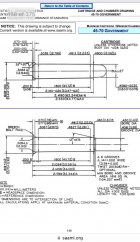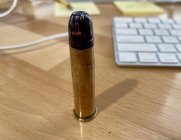I am new to reloading and can't get the action on my Winchester 1886 to close and lock on my reloads (hand feeding the cartridge). It closes fine on factory cartridges, so I measured the cases:
Factory O.L. = 2.557, Reload O.L. = 2.528
Factory width at base = .500, Reload width at base = .499
Factory case length = 2.094, Reload case length = 2.089
Factory width at neck, just below crimp = .471, Reload width at neck, just below crimp = .476
Factory bullet (300 gr) width, just above crimp = .449, Reload bullet (350 gr) width, just above crimp = .456
Factory mid-case width = 2.79, Reload mid-case width = 2.94
My first thought was that the mid-case measurement might be the issue (swelling?), but I have an inert cartridge with the same mid-case width as my reload, and it feeds fine and the action closes with no fuss. Something to do with case taper at-large?
Help!
Factory O.L. = 2.557, Reload O.L. = 2.528
Factory width at base = .500, Reload width at base = .499
Factory case length = 2.094, Reload case length = 2.089
Factory width at neck, just below crimp = .471, Reload width at neck, just below crimp = .476
Factory bullet (300 gr) width, just above crimp = .449, Reload bullet (350 gr) width, just above crimp = .456
Factory mid-case width = 2.79, Reload mid-case width = 2.94
My first thought was that the mid-case measurement might be the issue (swelling?), but I have an inert cartridge with the same mid-case width as my reload, and it feeds fine and the action closes with no fuss. Something to do with case taper at-large?
Help!












